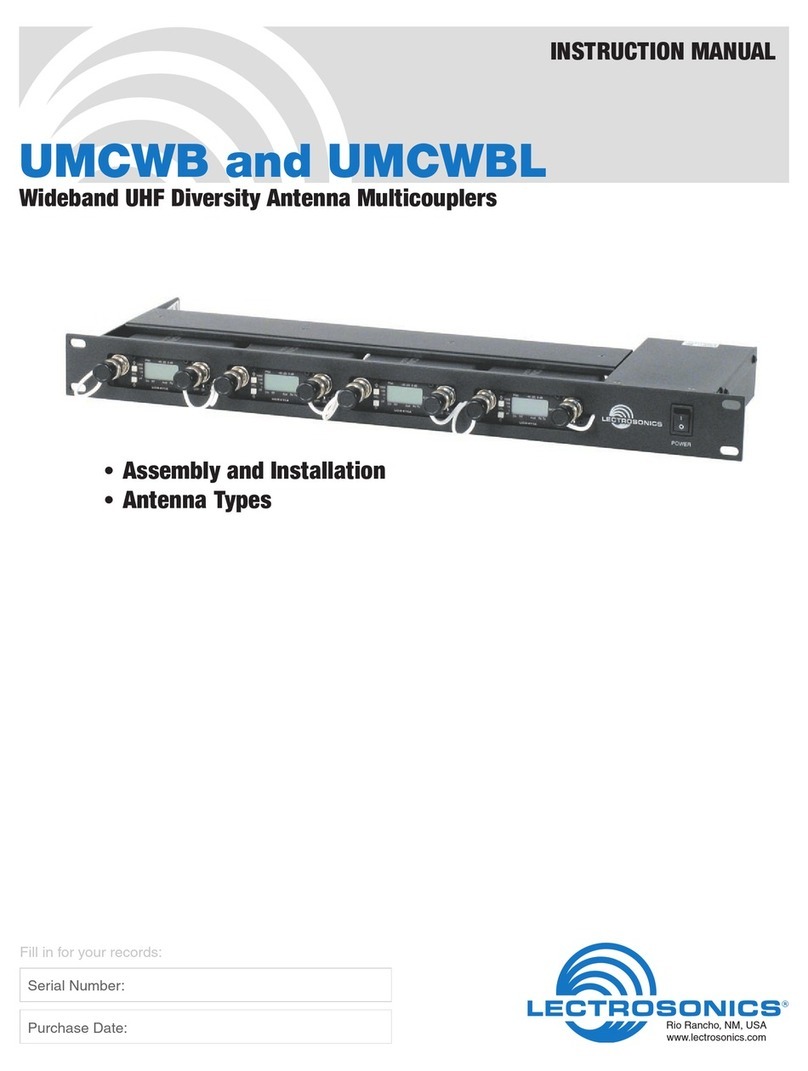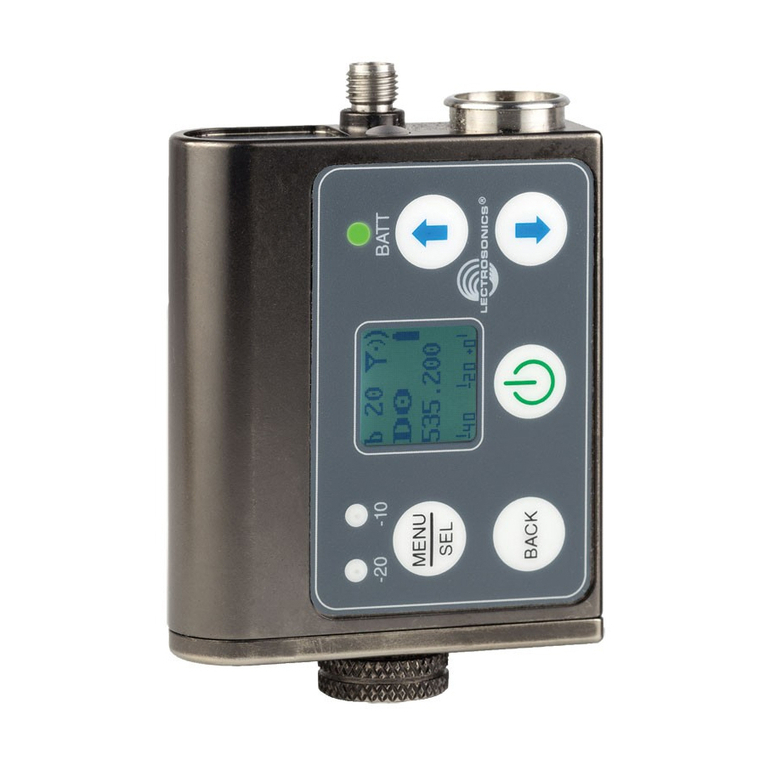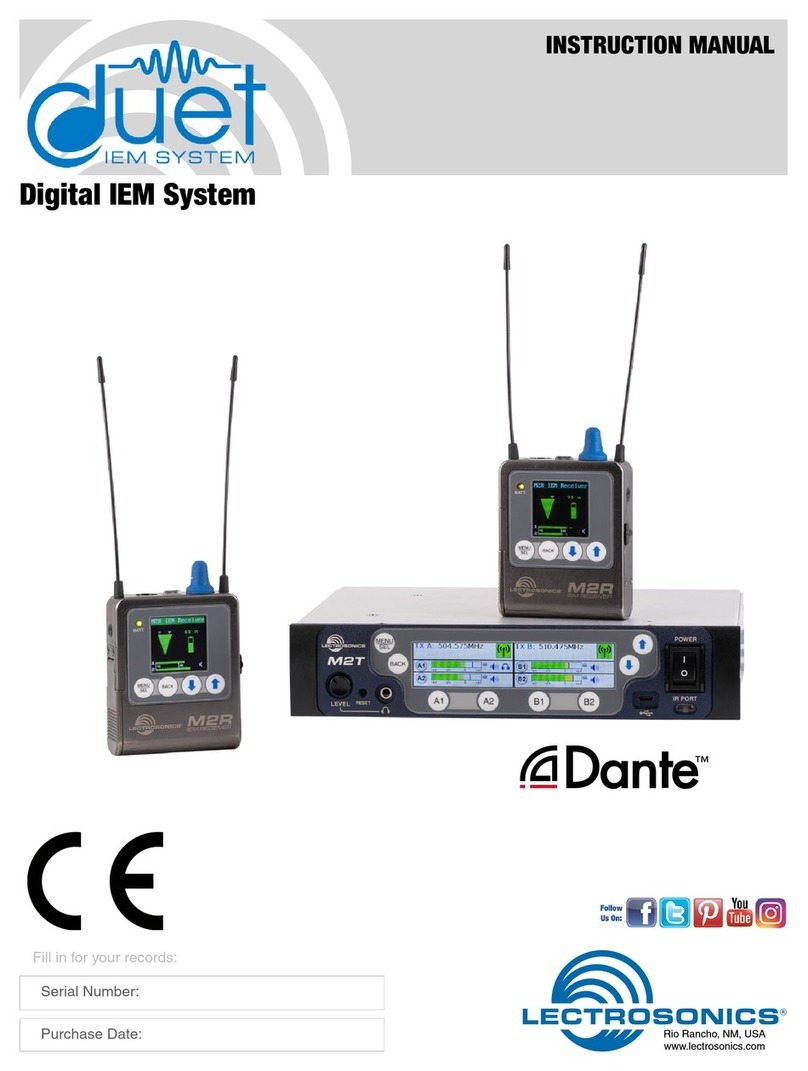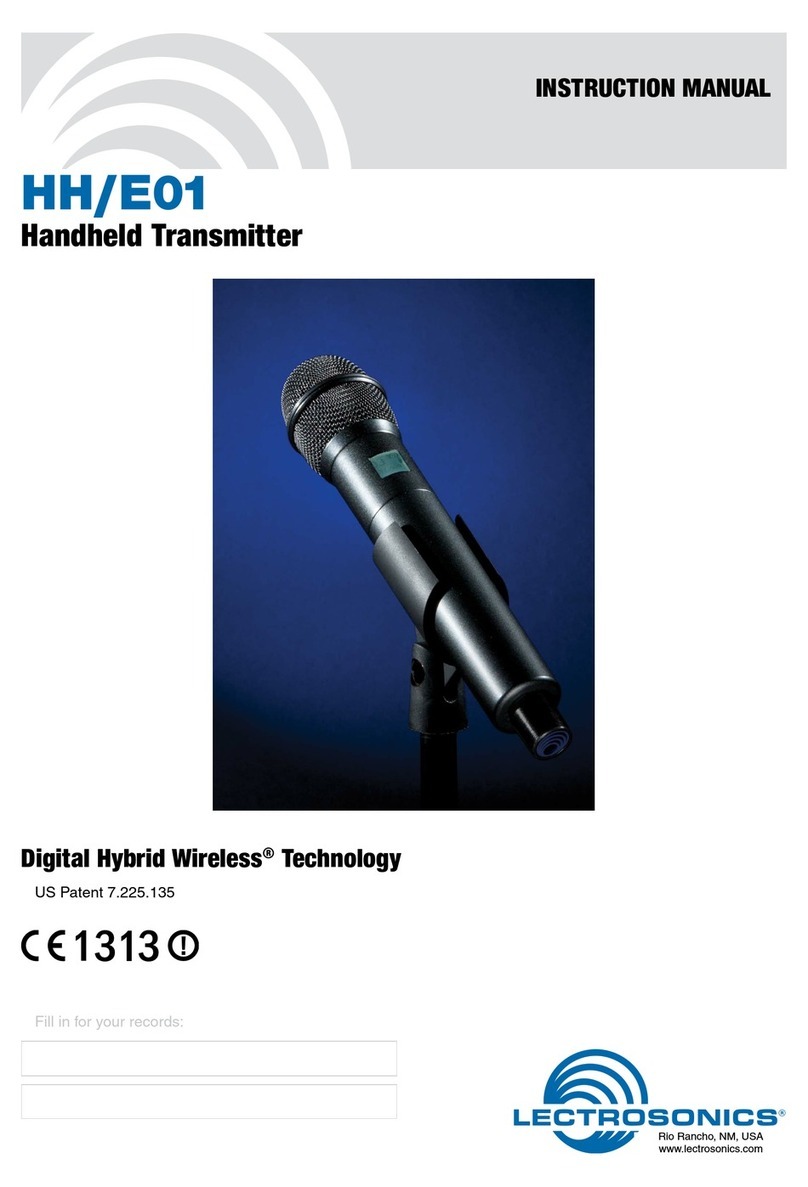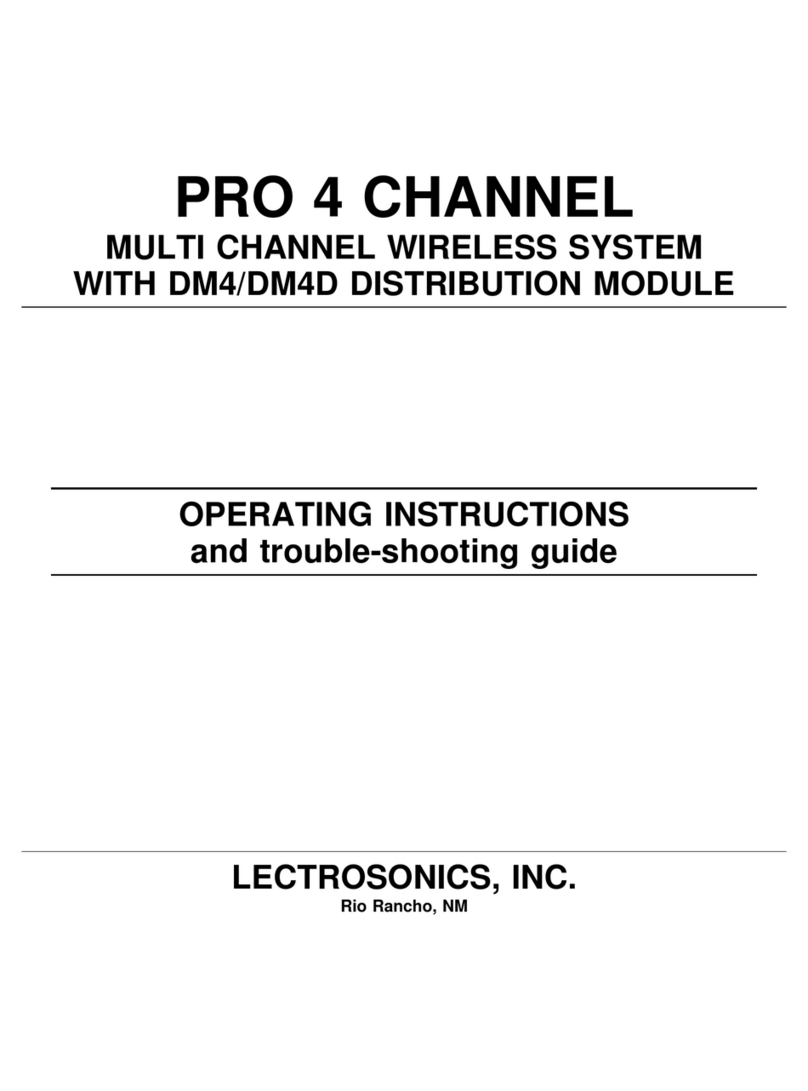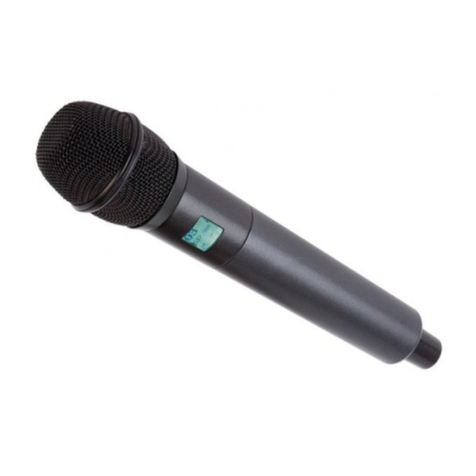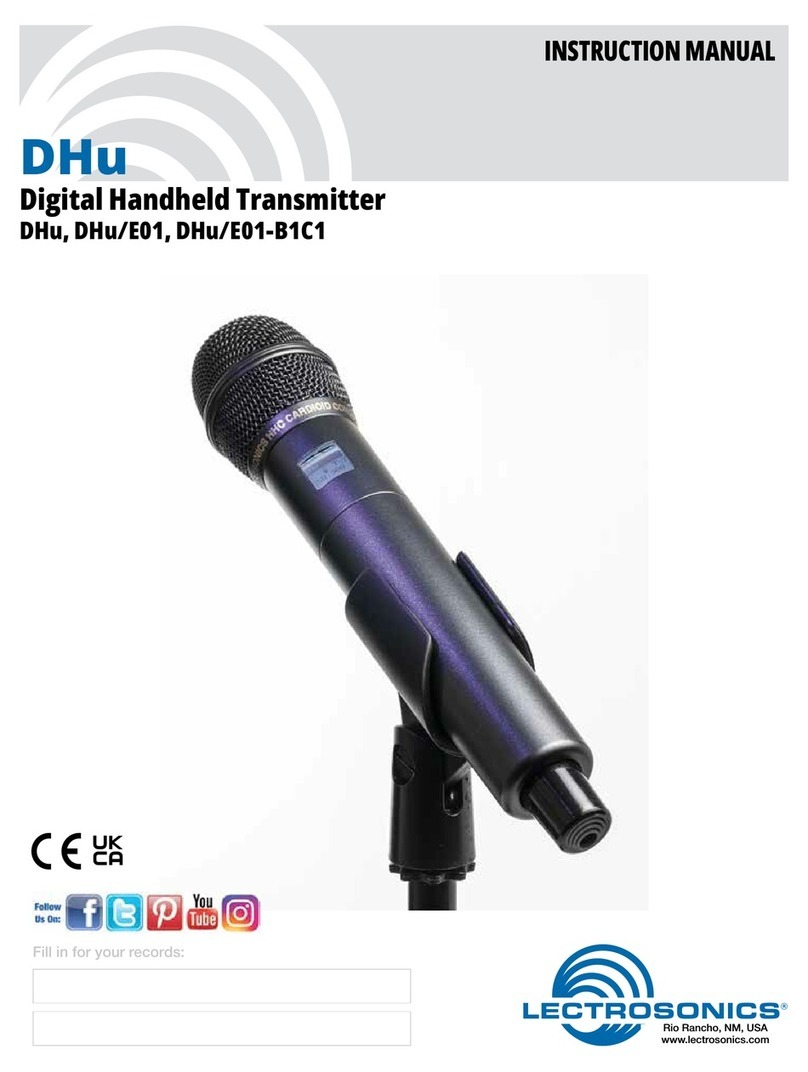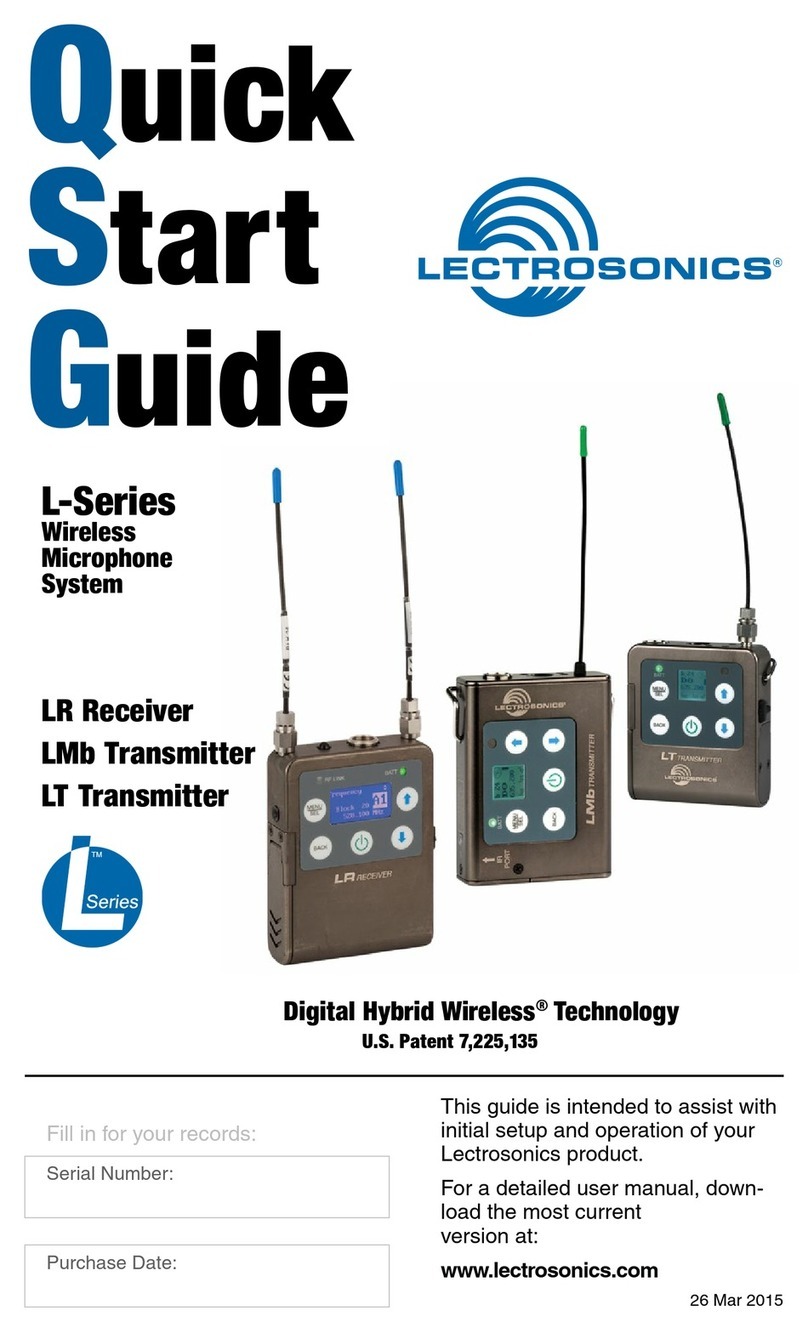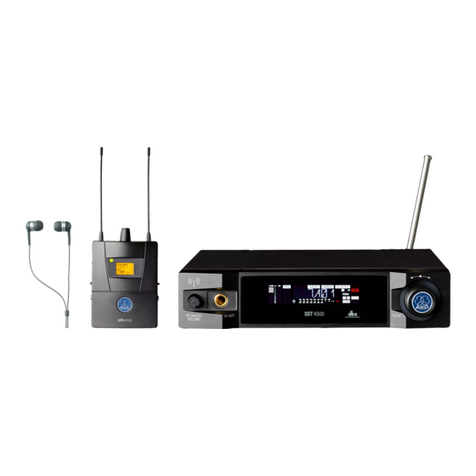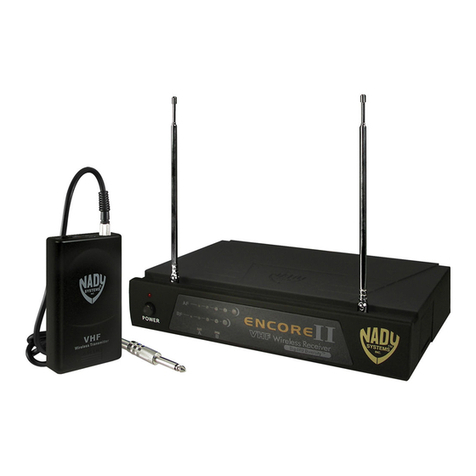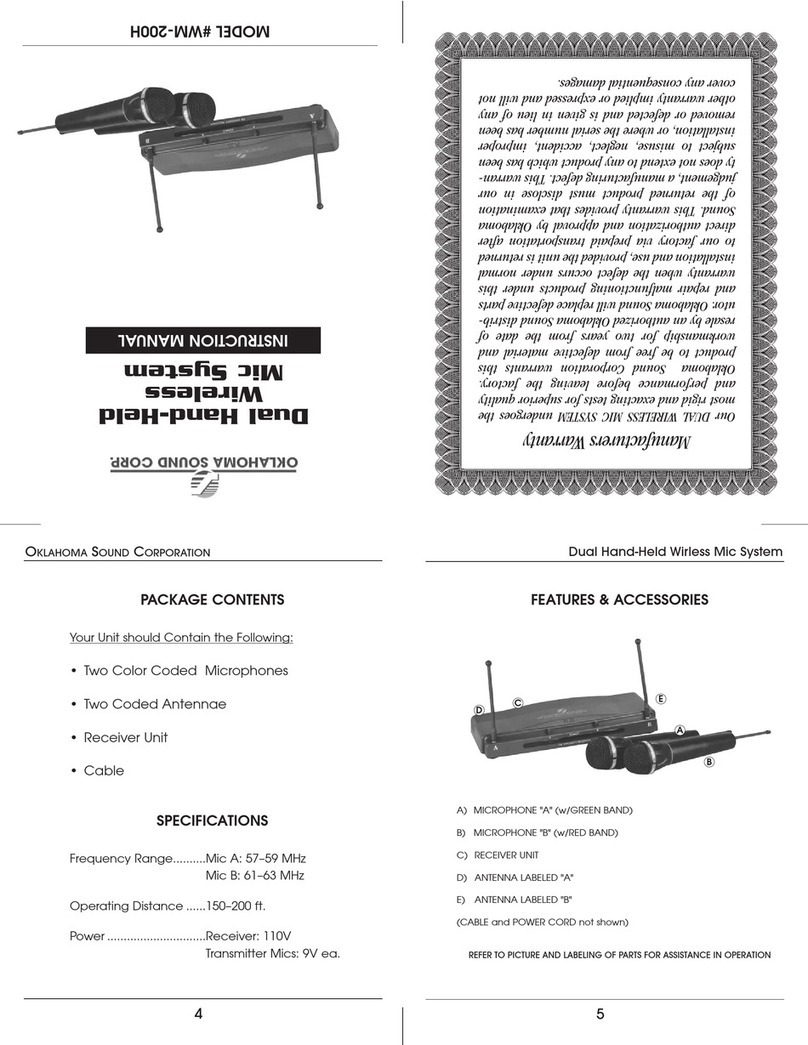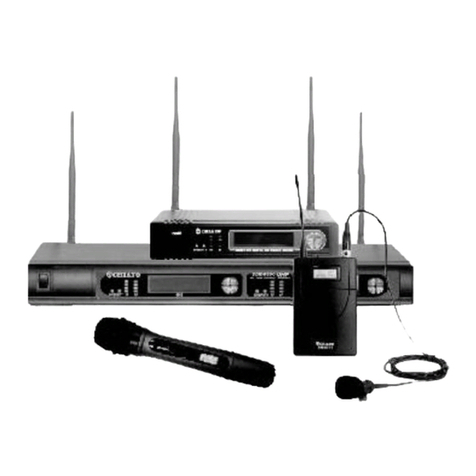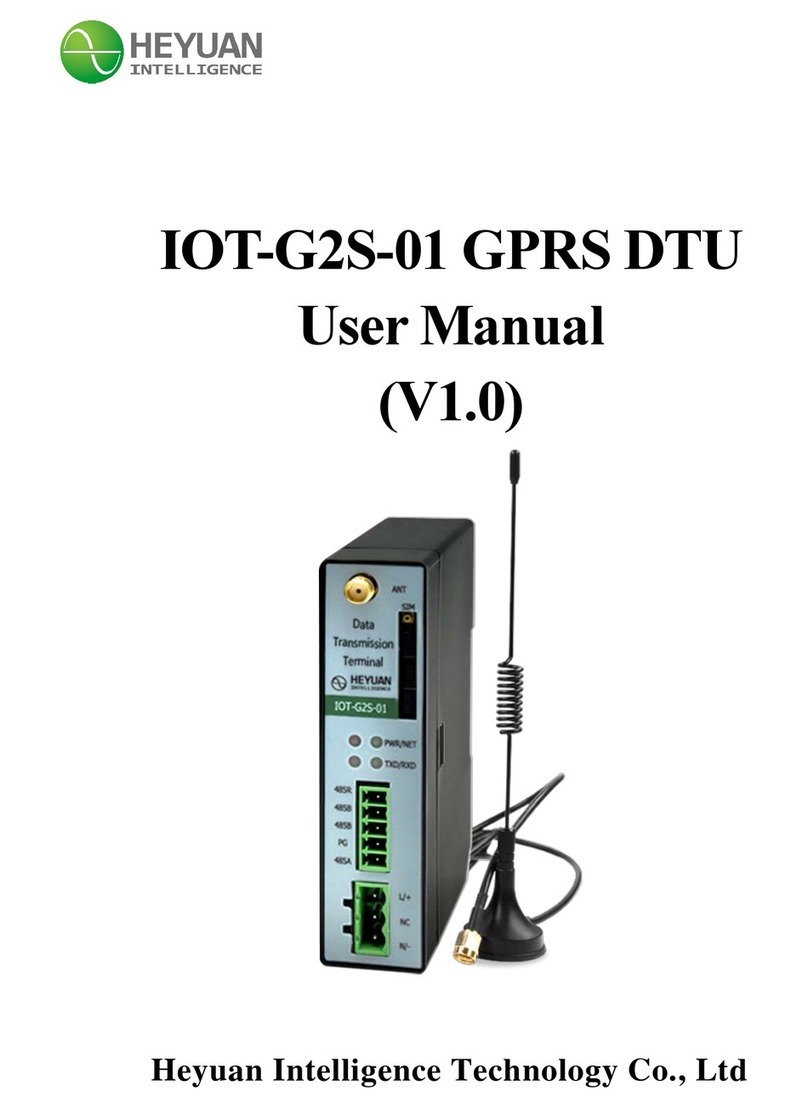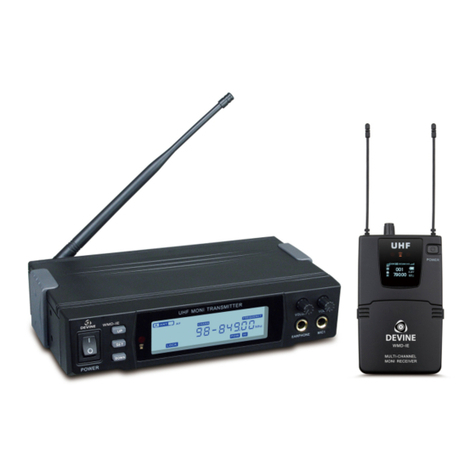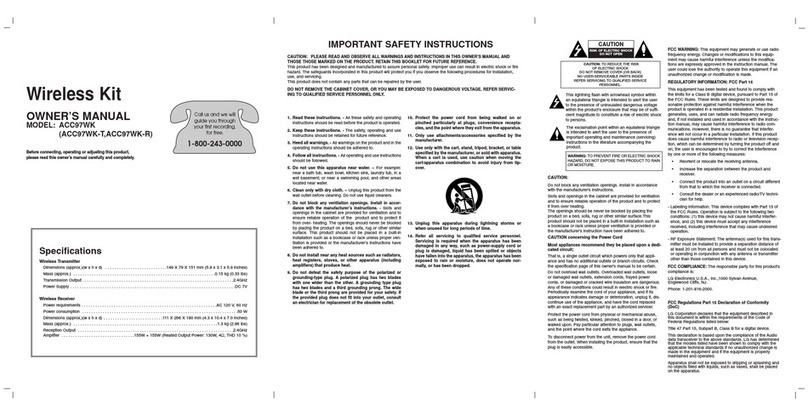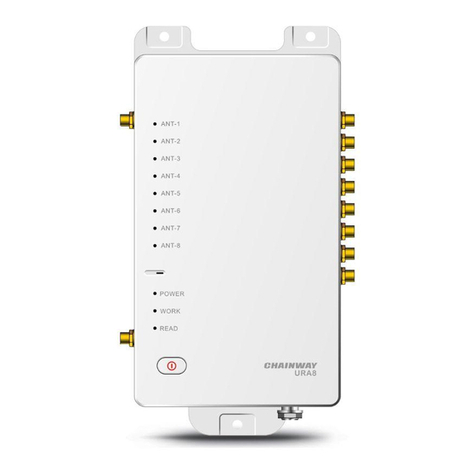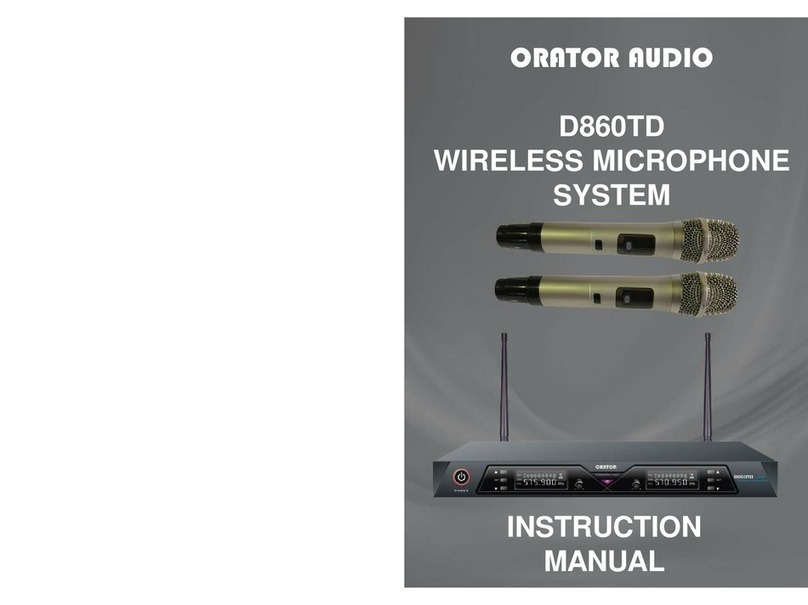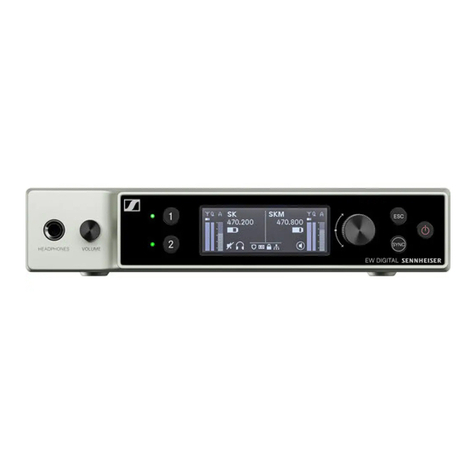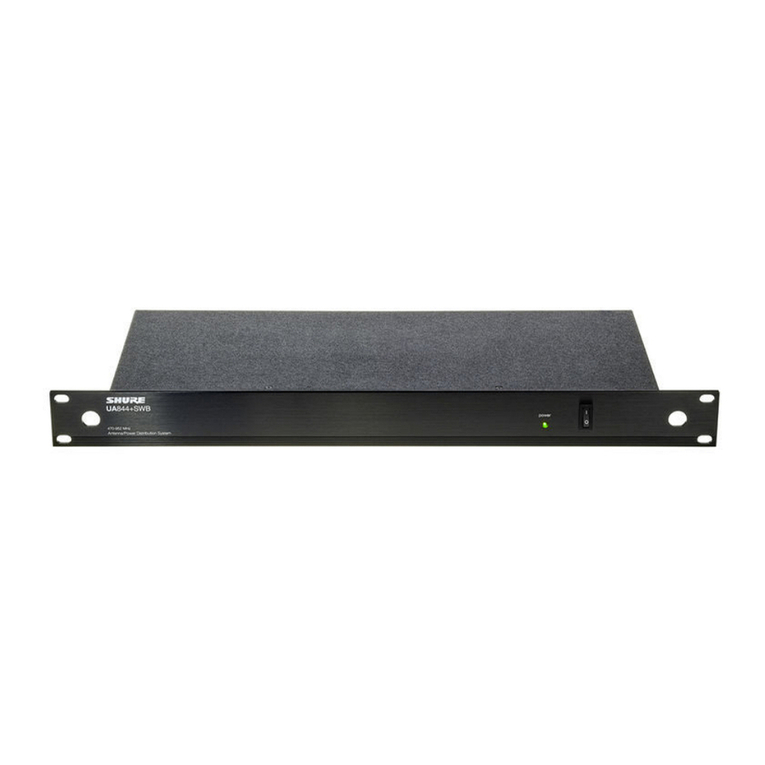
SMWB/E07 Series
LECTROSONICS, INC.
4
Introduction
The design of the SMWB/E07 transmitter delivers the
advanced technology and features of Digital Hybrid
Wireless®in a Lectrosonics belt-pack transmitter at a
modest cost. Digital Hybrid Wireless®combines a 24-bit
digital audio chain with an analog FM radio link to elimi-
nate a compandor and its artifacts, yet preserve the
extended operating range and noise rejection of the fin-
est analog wireless systems. DSP “compatibility modes”
allow the transmitter to also be used with a variety of
analog receivers by emulating the compandors found in
earlier Lectrosonics analog wireless and IFB receivers,
and certain receivers from other manufacturers (contact
the factory for details).
The housing is a rugged, machined aluminum package.
The input jack is a standard Lectrosonics 5-pin type for
use with electret lavaliere mics, dynamic mics, musi-
cal instrument pickups and line level signals. The LEDs
on the keypad allow quick and accurate level settings
without having to view the receiver. The unit is powered
by two AA batteries. The antenna port uses a standard
50 ohm SMA connector.
The switching power supplies in the provide constant
voltages to the transmitter circuits from the beginning to
the end of battery life, with output power remaining con-
stant over the life of the battery. The input amplifier uses
an ultra low noise op amp. Input gain is adjustable over
a 44 dB range, with a DSP-controlled dual envelope
input limiter providing a clean 30 dB range to prevent
overload from signal peaks.
About Digital Hybrid Wireless®
All wireless links suffer from channel noise to some
degree, and all wireless microphone systems seek to
minimize the impact of that noise on the desired signal.
Conventional analog systems use compandors for
enhanced dynamic range, at the cost of subtle artifacts
(known as “pumping” and “breathing”). Wholly digital
systems defeat the noise by sending the audio informa-
tion in digital form, at the cost of some combination of
power, bandwidth, operating range and resistance to
interference.
The Lectrosonics Digital Hybrid Wireless system over-
comes channel noise in a dramatically new way, digitally
encoding the audio in the transmitter and decoding it
in the receiver, yet still sending the encoded informa-
tion via an analog FM wireless link. This proprietary
algorithm is not a digital implementation of an analog
compandor but a technique which can be accomplished
only in the digital domain.
Since the RF link between transmitter and receiver is
FM, channel noise will increase gradually with in-
creased operating range and weak signal conditions,
however, the Digital Hybrid Wireles system handles this
situation elegantly with rarely audible audio artifacts as
the receiver approaches its squelch threshold.
In contrast, a purely digital system tends to drop the
audio suddenly during brief dropouts and weak signal
conditions. The Digital Hybrid Wireless system simply
encodes the signal to use a noisy channel as efficiently
and robustly as possible, yielding audio performance
that rivals that of purely digital systems, without the
power, noise and bandwidth problems inherent in digital
transmission. Because it uses an analog FM link, Digital
Hybrid Wireless enjoys all the benefits of conventional
FM wireless systems, such as excellent range, efficient
use of RF spectrum, and long battery life.
Servo Bias Input and Wiring
The input preamp is a unique design that delivers
audible improvements over conventional transmitter
inputs. Two different microphone wiring schemes are
available to simplify and standardize the configuration.
Simplified 2-wire and 3-wire configurations provide sev-
eral arrangements designed for use only with servo bias
inputs to take full advantage of the preamp circuitry.
A line level input wiring provides an extended frequency
response with an LF roll-off at 35 Hz for use with instru-
ments and line level signal sources.
DSP-controlled Input Limiter
The transmitter employs a digitally-controlled analog
audio limiter prior to the analog-to-digital converter.
The limiter has a range greater than 30 dB for excellent
overload protection. A dual release envelope makes the
limiter acoustically transparent while maintaining low
distortion. It can be thought of as two limiters in series,
connected as a fast attack and release limiter followed
by a slow attack and release limiter. The limiter recovers
quickly from brief transients, so that its action is hidden
from the listener, but recovers slowly from sustained
high levels to keep audio distortion low and preserve
short term dynamic changes in the audio.
Recorder function
The SMWB/E07 has a built in recording function for use
in situations where RF may not be possible or to work
as a stand alone recorder. The record function and
transmit functions are exclusive of each other - you can-
not record AND transmit at the same time. The record-
er samples at 44.1kHz rate with a 24 bit sample depth.
(the rate was selected due to the required 44.1kHz rate
used for the digital hybrid algorithm). The micro SD card
also offers easy firmware update capabilities without
the need for a USB cable or driver issues.
